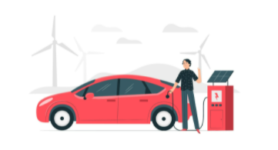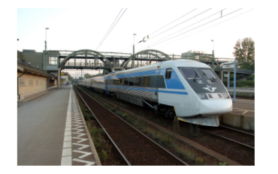Green on the Go
Can green transport be accessible to everyone?
Green transport is an important means of combating climate change. At the beginning of September, the first electric inland vessel in the Netherlands was on the NOS news. In addition, sustainable driving trucks are starting to gain ground in daily life, according to Kijk magazine, as evidenced by the article from last April. The emergence of green transport has a social impact on our lives and its use is not self-evident for everyone. When do we use green transport? Which methods do scientists use in their research into this issue? What were the main conclusions?
Scientists Rachel Lee and Solomon Brown of the University of Sheffield in England examined the social impacts of owning electric vehicles. They used the BEVI model for this. BEVI stands for Behavior-based Electric Vehicle Grid Integration. The model was developed in England in 2020 and aims to simulate the adoption of electric vehicles. Variables have been included in the model for the simulation, such as the price of electricity, car brands and the influence of social media. The model also contains a database of car owners selected from the UK National Travel Survey. These car owners drive a repeated weekly series of trips. The model links car owners together via a homophilic index. This means connecting people with similar interests and opinions. Subsequently, the car owners communicate with each other every week about the satisfaction of their electric cars.
The results of researchers Lee and Brown showed that people who are in a lower socioeconomic class are much less likely to buy or use an electric car. Dr. Sanne Akerboom, lecturer in Law and Governance of the Energy Transition at Utrecht University, agrees with this conclusion. She wants all people to participate in the energy transition. Sanne: “Everyone has to adapt their behavior [within climate change].” What are alternatives for people from the lower socio-economic class, so that they can still participate in the energy transition?

An electric car with its owner, who is charging the car with self-generated energy.
A second model used in science is UTAUT. This stands for Unified Theory of Acceptance and Use of Technology. The model was developed in 2003 and is used to study the acceptance of technology in humans. The model tries to explain people’s intentions to use certain techniques. In addition, the model tries to find an explanation for the subsequent usage behaviour. There are four important principles built into the model, such as performance expectation of technology and social influence of fellow human beings. For example, UTAUT was used in a 2007 study to examine people’s views on mobile services and technology in Northern Finland.
Researchers Riccardo Curtale, Feixiong Liao and Peter van der Waerden of Eindhoven University of Technology applied UTAUT this year in their research into the use of shared electric cars in the Netherlands. A shared electric car means that several people use and/or own one car. That could be a company car. Sharing an electric car can be a solution for people from the lower socio-economic class. They can jointly own a car and still participate in the energy transition. The researchers concluded that the Dutch are increasingly using the shared electric car. Social influence plays a key role here. Other factors turned out to be personal attitudes and a fearless experience with shared electric cars. A completely different aspect emerged: due to the corona pandemic, the Dutch are more concerned with hygiene than before when they shared an electric car.
Another option for traveling without owning a car is to use public transport. In the Netherlands, public transport is becoming greener. This also applies to the countries around us. There are already quite a few electric buses in the province of Utrecht and a new tram line has been built at the Utrecht Science Park in recent years. This tram will replace the polluting city buses. The goal is of course to get people to use this green public transport, but how can you predict whether people actually do this?

A fast electric train. This is an example of green public transport.
Three scientists from the University of Terengganu in Malaysia investigated this question. In their research they applied the Theory of Reasoned Action model (TRA model). This model tries to explain the relationship between behavior and attitude in people. It is applied to predict how individuals will behave based on their pre-existing attitudes and behavioral intentions. Various variables are also used in this model, such as social influence and the fare. The researchers concluded that price and service quality are important factors for catching the train and leaving the car. A third factor was the social influence of family and friends. Sanne Akerboom: “Accessibility of green public transport is also an important factor.” This factor was not included in the study. “Look at the situation in Amsterdam-North, for example. The new North-South line has been constructed there, which means that bus lines in this district have been scrapped. The metro has not been given a stop close to home for all residents. This makes the new metro line less accessible for many people and not everyone can use it.”
So in science there are three models that can be used to research the social impact and use of green transport. The BEVI, UTAUT and TRA model have been applied by various scientists this year. Whether people use green transport depends, among other things, on social influence, personal attitude and previous experiences. The socio-economic class of people also plays a factor. The studies show that everyone can use green transport; there are plenty of variants. Taking green public transport depends on price, quality and accessibility. Sanne Akerboom says about herself: “I only use public transport myself. The fact that the transport is green is more important to me than the travel costs.” Perhaps something to think about further. Do you ever use green (public) transport yourself?

